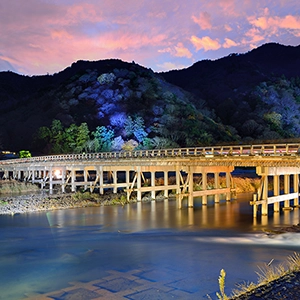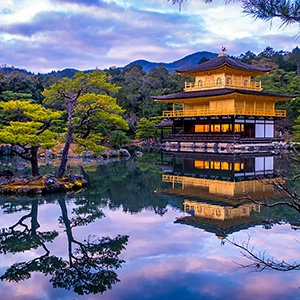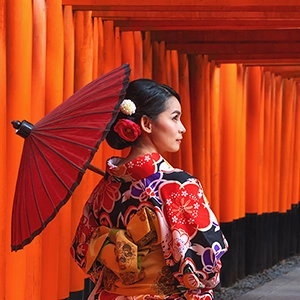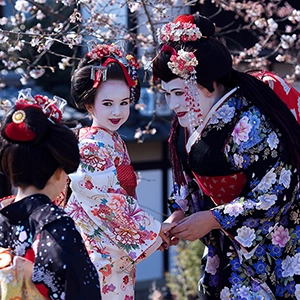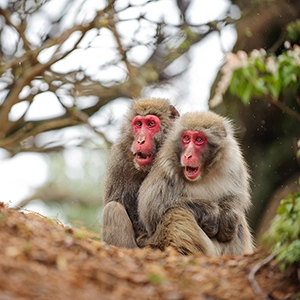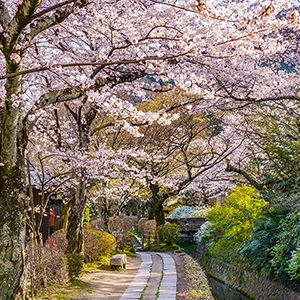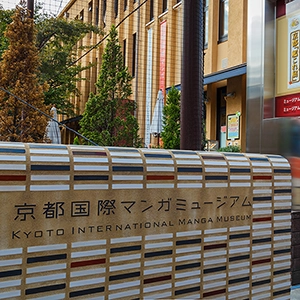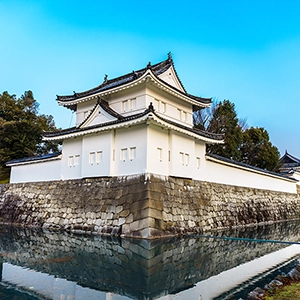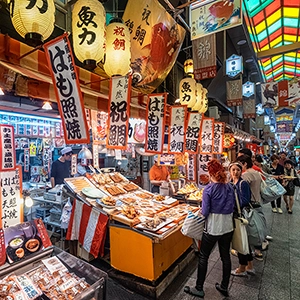Experience The Enchantment Of The Arashiyama Bamboo Grove
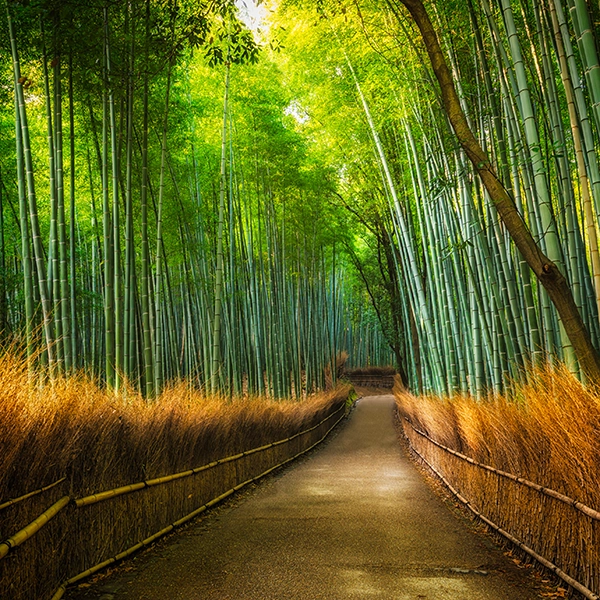
The Kyoto Bamboo Grove, also known as Arashiyama Bamboo Forest or Sagano Bamboo Forest, is a mesmerizing natural wonder located in the Arashiyama district of Kyoto, Japan. The grove is home to countless towering bamboo stalks, which form a dense canopy and create a serene atmosphere that has attracted visitors for centuries. Let's delve into the history, beauty, and unique features of this enchanting attraction.
The History of Kyoto Bamboo Grove
The Kyoto Bamboo Grove has a rich history that dates back over 1,000 years. Initially, the Arashiyama district was a popular destination for nobility who sought a peaceful retreat from the hustle and bustle of city life. Throughout the centuries, the area has been the backdrop for various cultural events and historic occasions, such as the traditional Moon Viewing Ceremony during the Heian period.
The bamboo grove was cultivated primarily for practical purposes, such as the production of wood and paper. Over time, the bamboo forest became not only an essential resource but also a symbol of the area's natural beauty and cultural significance. Today, the grove is a must-see destination for tourists and locals alike, offering a tranquil escape from modern life.
Exploring the Kyoto Bamboo Grove
The main path that winds through the Kyoto Bamboo Grove is approximately 500 meters long and takes visitors on a journey through the towering green stalks. Walking along the path is a truly unique experience, as the bamboo sways gently in the wind, casting dappled sunlight onto the forest floor. The serene atmosphere and the rustling of leaves overhead create an almost otherworldly ambiance that is both calming and awe-inspiring.
As you explore the grove, you will also come across several temples and shrines nestled amongst the bamboo. One of the most famous is the Nonomiya Shrine, which was once the purification site for imperial princesses serving as shrine maidens at the Ise Grand Shrine. Another notable temple is the Tenryu-ji Temple, a UNESCO World Heritage site, featuring stunning gardens and architecture.
When to Visit the Kyoto Bamboo Grove
While the Kyoto Bamboo Grove is a captivating sight year-round, there are specific times of the year when its beauty is truly exceptional. Spring is a popular time to visit, as the cherry blossoms bloom, adding a burst of pink to the already enchanting landscape. During this season, the grove is especially picturesque, with the contrast of the pink cherry blossoms and the verdant green bamboo creating a truly unforgettable scene.
Another excellent time to visit the grove is during the autumn months when the leaves change color, painting the landscape in shades of red, orange, and yellow. The vivid autumn foliage, combined with the towering bamboo stalks, creates a magical atmosphere that draws visitors from all over the world. However, keep in mind that these seasons also attract larger crowds, so be prepared for a busier experience if you visit during these times.

Getting to the Kyoto Bamboo Grove
Accessing the Kyoto Bamboo Grove is relatively simple, as it is well-connected by public transportation. The most convenient way to reach the grove is by taking the JR Sagano Line from Kyoto Station to Saga-Arashiyama Station. From the station, it is approximately a 10-minute walk to the entrance of the bamboo forest. Alternatively, you can take the Hankyu Railway to Arashiyama Station or the Keifuku Randen Tram Line to Arashiyama-Tenryuji Station, both of which are within walking distance to the grove.
Nearby Attractions and Activities
While the Kyoto Bamboo Grove is undoubtedly the main attraction, there are numerous other sights and activities in the Arashiyama district worth exploring. The Togetsukyo Bridge, which spans the Katsura River, is a popular spot for enjoying picturesque views of the river and surrounding mountains. This iconic bridge has been a symbol of Arashiyama for centuries and is particularly stunning during cherry blossom season and autumn foliage.
For those interested in Japanese history and culture, the Arashiyama district is home to several traditional teahouses and ryokans (Japanese-style inns) where you can experience authentic Japanese hospitality. In addition, the area boasts numerous souvenir shops selling local crafts, such as bamboo products and pottery, which make for unique mementos of your visit to the Kyoto Bamboo Grove.
Another popular activity in the Arashiyama district is taking a leisurely boat ride along the Hozu River. The scenic boat tours provide visitors with a unique perspective of the lush landscape and allow them to take in the beauty of the area from the water. For the more adventurous, there are also opportunities to rent bicycles and explore the district at a leisurely pace, discovering hidden gems along the way.
Preserving the Kyoto Bamboo Grove
As the popularity of the Kyoto Bamboo Grove has grown over the years, so too has the need for conservation efforts. The local government and community have taken steps to ensure the protection of this natural treasure by implementing measures to preserve the grove and maintain its delicate ecosystem. Visitors are encouraged to follow designated paths and refrain from damaging the bamboo or disturbing the wildlife that calls the grove home.
One notable initiative is the Bamboo Light-Up Event held annually in December, during which the grove is illuminated with lights, creating a magical atmosphere while raising awareness of the importance of preservation. The event draws attention to the delicate balance between tourism and conservation, reminding visitors to treat the environment with respect and care.
Enjoy Your Visit to the Kyoto Arashiyama Bamboo Forest
The Kyoto Bamboo Grove is a breathtaking destination that offers a unique experience amidst the towering bamboo stalks and serene atmosphere. With its rich history, natural beauty, and cultural significance, it is no wonder that this enchanting location continues to captivate visitors from around the world. Whether you visit during the vibrant seasons of spring or autumn, or explore the grove in the quiet of winter, the Kyoto Bamboo Grove promises a memorable experience that will leave a lasting impression.

